“How can a white man in Africa ever know what it means to suffer at the hand of the oppressor when by our very lineage we are often the oppressor ourselves? Even by default, even unwittingly, even now, when we all squeal the cries of the victim, we cannot extradite ourselves from guilt. We may not be the tyrant incarnate, but we’re nonetheless the silent, serpentine collaborators in a vast encompassing crime.”
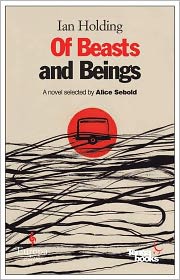 Young Zimbabwean writer Ian Holding, a school teacher in Harare, is one of the white settlers who has decided to stay in Zimbabwe, a country in Africa which has been riven with violence for many years. Robert Mugabe, a leader of Zimbabwe’s liberation movement against the British, was elected to power in 1980 and remains in power to this day, supported by his army. The 2008 election led to the defeat of his party, and the presidential election ended in a dispute, but the opposition, wanting peace, signed an agreement for a unity party with Mugabe retaining power. Over the past thirty years, the economic situation in Zimbabwe has worsened. The farms of white settlers who have lived in Zimbabwe for generations have been seized and parceled out to political supporters of the President, and the country’s GDP has declined by 40% since 2000, with no suggestions that things will improve anytime soon.
Young Zimbabwean writer Ian Holding, a school teacher in Harare, is one of the white settlers who has decided to stay in Zimbabwe, a country in Africa which has been riven with violence for many years. Robert Mugabe, a leader of Zimbabwe’s liberation movement against the British, was elected to power in 1980 and remains in power to this day, supported by his army. The 2008 election led to the defeat of his party, and the presidential election ended in a dispute, but the opposition, wanting peace, signed an agreement for a unity party with Mugabe retaining power. Over the past thirty years, the economic situation in Zimbabwe has worsened. The farms of white settlers who have lived in Zimbabwe for generations have been seized and parceled out to political supporters of the President, and the country’s GDP has declined by 40% since 2000, with no suggestions that things will improve anytime soon.
In this novel Holding writes two parallel stories, divided into four parts, which intersect at the end and provide a kind of conclusion, though not necessarily resolution, to the terrible political traumas which infect the nation now. The first part is a dramatic, horrifying, and immensely sad story of a post-apocalyptic “society” in which a few survivors try to stay alive in a bombed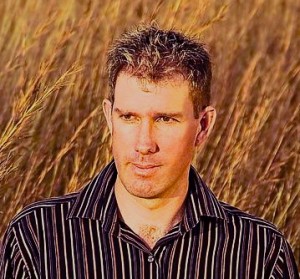 out and completely devastated city, a dog-eat-dog world in which survivors are the ones with the most power. Armed with superior weapons, they have learned that survival of the fittest has new meanings in this world which depends on killing before they are killed themselves. In the midst of a famine, they don’t even know who their enemies are – they could be any of the various factions of the militia; offshoots of the army, police, or the opposition; and black or white.
out and completely devastated city, a dog-eat-dog world in which survivors are the ones with the most power. Armed with superior weapons, they have learned that survival of the fittest has new meanings in this world which depends on killing before they are killed themselves. In the midst of a famine, they don’t even know who their enemies are – they could be any of the various factions of the militia; offshoots of the army, police, or the opposition; and black or white.
As the novel opens, a man picking among the ruins of a garden looking for roots or any other kind of food, simply to stay alive, suddenly finds himself with a rope around his neck, being dragged off. His initial captor is soon killed by two young men with superior power, and he is dragged off to become a beast of burden for these boys, an older man, and a pregnant woman. In the city, where they scavenge behind a shopping mall, they are without food and water. For a few days, the captive, who has not been fed, works all day pulling a heavy cart, and the others continue their scavenging and eventually head out of the city. References to the “genocide,” not explained, add to the suspense, as they continue, discovering not another living soul, a village “burned clean,” and a rare few in their own situation, at least one of whom is killed by the older man in the group.
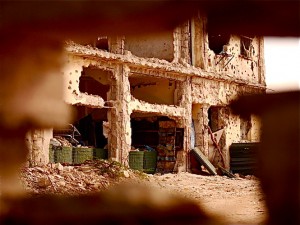
In Part Two, the scene shifts to the journal of Ian, a schoolteacher whose family has lived on a farm in the highland for decades before emigrating – the parents to Australia, one brother to London, and one to Canada. Only Ian remains behind, and he, too, is thinking of leaving. “There is no easier killer of an optimist than the cold, cruel workings of an African ‘democracy,’ ” he says. As he describes his life as a white man in the highlands, he describes the abuses to which he and the other white residents have been subjected. He also, however, reflects some of the insensitivities of the white settlers themselves, and the reader quickly sees how blind Ian is to the basic humanity of his own servants. Tobias, who has worked for the family for thirty-eight years, is in increasing pain with a sore leg, but Ian delays until the last minute in taking him for medical care – at the inferior clinic for people of his own race. As Ian contemplates selling his house and trying to get a job in South Africa, he spends little or no time deciding how to resolve the issues of the servants who have depended on his family for decades.
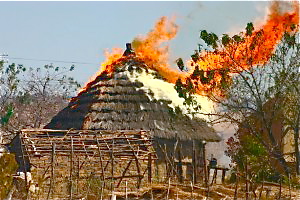
Part III continues the journeys of the captive “beast of burden” and the young men, the man, and the woman who are using him. Their lives, as they try to stay alive and get someplace “safe,” are constantly in danger, food and water are always in doubt, and the sights that greet them of pillage, murder, and devastation of villages never change. “The reality is something that paralyzes them, throwing off their sense of awareness of the known world.”
Part IV returns to Ian the schoolteacher (just as the author is Ian, a schoolteacher), who continues to write in his journal about the life he sees around him. As he deals with the details of selling the family home and moving, he comments, “Peel away the top layers and we have a nation of psychotics hunkered down there in the muck.” He begins to imagine himself as a slave, much like the captive with the rope around his neck, and recognizes that “the colonial blood surges in [his] veins.” Eventually, he has a life-changing experience, but he is not sure how to deal with it. As he ponders his role in the problem and his possible role in a solution, his personal weaknesses become clear. Ultimately, the solution is not a resolution.
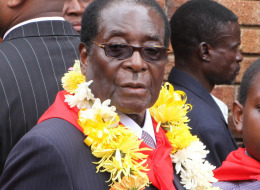
President Robert Mugabe on his 85th birthday
Dramatic, horrifying, and filled with vibrant language which swirls around, creating word pictures which the reader will often find difficult to accept, this novel is a heartfelt cry for understanding in a place where it appears to be rare. The author requires the reader to think about the situation in Zimbabwe from several different points of view, all of which seem hopeless, and Ian comments that “It is left to me as a final cruel irony to tell the story.” Whether or not people like the author will be able to survive in a “society” which seems to lack any sense of a common humanity remains to be seen. A close and very personal look at a country in which there seem to be no right answers.
Photos, in order: The author’s photo appears on http://www.timeslive.co.za On the same site the author writes about his life in Zimbabwe.
The bombed building is from http://www.eastafricaforum.net.
The burning hut is shown on http://www.peacexpeace.org
Robert Mugabe on his 85th birthday appears on http://www.huffingtonpost.com. The party is reported to have cost $300,000.
